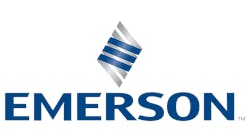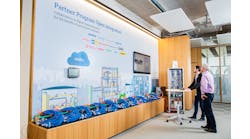Some things never change, which means they just change more slowly than we usually notice. One of these tortoises is intrinsic safety (IS) in the process industries, and most control engineers and other folks I know are grateful for its slow-and-steady pace because they know it helps keep them and their colleagues safer.
The logic of limiting power, fuel and ignition sources that could potentially cause a fire or explosion remains unassailable. And, the basic energy-limiting principles of IS for evaluating process applications, designing circuits, establishing barriers, implementing testing, setting up alerts and alarms, seeking root causes and other IS functions remain as crucial today as when they were first developed and applied. Countless technical professionals owe life, limb, assets and operational well-being to proven IS standards and practices that are pretty much set in stone in all process industries and applications.
You can read up on some of the seminal works in the IS field in last year's Resources column, "Instrinsic safety doesn't blow it."
[pullquote]Still, just as intrinsic safety is a justifiably immovable object, the inexorable push towards technical improvement and innovation is an equally irresistible force, which seems to be nudging its way into some IS areas in recent years. For instance, I remember about 10 years ago when the National Fire Protection Association's NFPA-79 machine safety rules finally allowed safety and control communications on the same network. This paved the way for dual-processor safety PLCs and other components to be designed into equipment, production lines and other systems before they're built.
These and other standards and regulatory upgrades have enabled I/O and other process control components to get out of their traditional cabinets, provided they're appropriately shielded and dipped in enough rubber and plastic. Likewise, several types of control cables have escaped their traditional metal conduit, and are now easier to install in their far more flexible, but still IS-rated jackets and connectors.
"We're even seeing overlap between IS and safety instrumented systems (SIS). For example, all of our DeltaV and SIS solutions are available with intrinsically safe I/O," says Rune Ruppenhagen, DeltaV hardware product marketing manager at Emerson Automation Solutions. "Where we used to have I/O cards wired in separate cabinets with IS barriers, we now have integrated circuits into IS cards. We've actually had these for about 15 years, but more users are waking up to using them now, and we also introduced IS for our CHARaracterization Modules (CHARMS) in 2011. We're seeing more adoption of IS I/O, and we think one of the main reasons it's more prevalent is just because it's easier to deploy. Today's IS I/O today doesn't have big footprints, high design costs, or require as much work."
Likewise, just over a year ago, I saw what I thought was one the biggest IS milestones go by—an intrinsically safe tablet PC. Exloc Instruments Inc. introduced what it reported as the world's first Class I, Division 1-certified tablet PC from Aegex Technologies, running Microsoft Windows 10 software.
[javascriptSnippet]
"Users can take this tablet PC into any plant with gas-hazardous," reported Ed Beardshaw, sales and marketing VP at Exloc. "It also has video and a front-facing camera, which is really helping maintenance guys with troubleshooting because they no longer need to print drawings and manuals. They can also use this tablet to communicate via Skype or similar video collaboration software from the field, and reach colleagues or Exloc to learn what they need to do."
Despite these and other IS-related innovations, Ruppenhagen cautions that it's still crucial to conduct individual risk assessments, and follow IS regulations that apply to your industry and region, whether it's Europe's zone classifications or the class/division system used in the U.S. "More users, industries and nations are moving to adopt better IS practices, and a lot of the available products are lowering the hurdles to IS and making it more economical. Many plants now have IS equipment they can use without pulling a hot work permit."
I know there's good reason to be concerned about safety in other aspects of the process control and automation field. However, just because there's so much concentration devoted to IS solutions, I tend to worry less about it and the professionals working in it—just as I worry less about professional pilots ad my fellow airline passengers, and worry more when we're all driving to and from the airports.






